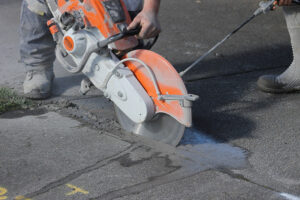The lifespan of concrete will only last for so long. Eventually, it will begin to deteriorate, getting cracked and broken down over time. When you start seeing cracks form, structures can be put in unsettling positions, and you will be required to make repairs before the damage has a chance to grow and cause even more problems. Here are ways you can get your concrete repaired.
Try Using Epoxy Injections
Epoxy injections are an effective solution if the cracks that you’re repairing have an opening that is at least 0.05 mm. However, you don’t want to use this method if there are many cracks in your structure or if you can’t regulate water leakage.
When you use this method, you seal cracks in your structure by injecting a given amount of epoxy beneath the crack(s) you’re trying to fix. Before you implement this method, though, you have to determine the primary source of cracking. If you don’t, more cracks will form, and the epoxy will only serve as a short-term solution.
Common circumstances that can hinder the effectiveness of epoxy are silt contamination and leakage. Dealing with these issues is crucial if you’re going to inject epoxy into whatever cracks you have.
Sealing and Routing
This method of fixing concrete is a lot more common than other methods, and it’s a simpler method as well. However, this method is only usable if structural repairs aren’t required and if you need solely remedial crack repairing.
Sealing and routing your concrete cracks is effective on inactive cracks that have no relation to tensile strength restoration.
This method makes cracks even larger, which sounds counterintuitive at first, but then a groove with a V shape is formed, and a sealant is added so that it fills this new groove.
Getting the Cracks Stitched
Of all of the concrete repairing methods you could try, stitching is one of the easiest to do, and it lasts longer than most other methods. When using this method, a number for the hole gets drilled on the surface of the crack, and it then gets stitched together by using metallic wire.
The wire will then be passed through the holes and securely anchored in the holes with the help of grout or epoxy.
Concrete Visions Will Get The Job Done Right
Concrete Visions has been working with clients for over 25 years. Our G&M Services installers are certified with the industry’s major firestop product manufacturers. As part of our firestop service, we can assess abnormal field conditions and, with the manufacturer’s technical support assistance, provide engineering judgments in a timely fashion to comply with contract specifications. Our Field Mechanics undergo ongoing training, including mandatory monthly safety meetings, weekly Toolbox Talks where safety and equipment information is shred, and trainings on safe work standards and safety best practices.

